"Is Tent Fumigation the Right Choice for Your Home?"
- Absolute Pest Control Hawaii PCO#1409
- Jun 12, 2024
- 3 min read
Updated: Jun 12, 2024

It's important to note that soil treatments (chemical ground treatments, and bait stations) are not effective for drywood termites as they live inside the wood. Structural fumigation (Tent Fumigation) is recommended for severe infestations, while less extensive ones can be treated with termiticides or localized heat treatment, which Absolute Termite & Pest Control Hawaii can happily help with.
Wondering How Tent Fumigation Works?
During the fumigation, a pest management professional and staff will cover a home with a tent and release a fumigant throughout the structure. The fumigant will circulate to reach cracks and crevices where termites can thrive. The fumigant will deplete the termites' oxygen, affect their nervous system, and cause their death.
Once the pest management professional has confirmed sufficient fumigant exposure to control all active termite colonies, the termite fumigation tent will be removed. After the tarps are removed, the fumigant will disperse into the air. It usually takes at least six hours for the fumigant thoroughly aerate from a house after treatment.
The entire fumigation process, from preparation to treatment to aeration, can take about 24 to 72 hours, depending on the size of the home or structure and outdoor conditions. For safety reasons, the pest control expert will test each room in the house using a sensitive fumigant clearance device to ensure the fumigant has aerated and occupants can safely re-enter the home.
It is important to follow the expert's instructions to prepare and remove some items before the fumigation. However, termite fumigants do not leave permanent residues in a home or on household items.
How Effective Is Tent Fumigation?
While fumigation is an effective treatment technique, it is not a prevention method. Fumigation controls drywood termite colonies that are active at the time of treatment, but it offers no protection against future colonies. This is why it is important to schedule an annual peace of mind inspection, or schedule a free estimate for areas of concern.
Preventing drywood termite infestations is much more challenging than preventing subterranean termite infestations due to the fact that there are more potential entry points for drywood termites. By sealing as many cracks as possible and performing regular upkeep on exposed wood, you and your pest professional can help reduce the likelihood of an infestation. However, a proactive nature can help protect your home. Schedule a free estimate, or a peace of mind inspection today!
Safety Information:
The termite fumigation process is a complex one that involves restricted-use pesticides. Fumigations can only be performed by professionals who have completed extensive training and passed certification tests. It is important hire a licensed pest management professional who has experience in fumigation to ensure the safety and effectiveness of the treatment.
A certified termite expert may use several pieces of equipment to help ensure your termite fumigation is as safe as possible. These may include sensitive fumigant clearance devices, gas monitoring equipment, and personal protective equipment. The use of equipment helps to ensure the safety of both the occupants of the home and the pest management professionals performing the fumigation.
Fumisicope: A what? A fumiscope is a piece of equipment used to measure concentrations of fumigant gas during the treatment process. It helps the pest management professional to ensure that the figant is being distributed evenly throughout the structure and that the concentration levels are within the safe range.
Clearance Device: A clearance device is used to check for extremely low concentrations (1 part per million or less) ofumigant in the house before people and pets can return. This device helps the pest management professional to ensure that theumigant has aerated from the structure and that it is safe for occupants to re-enter the home.
Important To Know:
Remember: Fumigants do not leave residues on household items after treatment, once the home has been aired and cleared properly. This means that there is no need to clean or dispose of any household items after the fumigation process is complete.
Schedule your homes free estimate today!













Comments